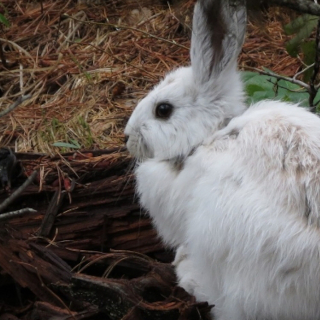What keeps birds and mammals changing in a warming world? See our new review on seasonal color molts.

An international team of Mills lab members and collaborators lead by PhD candidate Marketa Zimova, published a manuscript on the underlying basis of seasonal coat color molts. It is the first comprehensive review describing the adaptive value and the physiological and molecular mechanisms underpinning seasonal color molting in 21 species of birds and mammals.
The article was published on March 3rd 2018 in Biological Reviews and is available via Open Access.
The abstract:
“Animals that occupy temperate and polar regions have specialized traits that help them survive in harsh, highly seasonal environments. One particularly important adaptation is seasonal coat color (SCC) molting. Over 20 species of birds and mammals distributed across the northern hemisphere undergo complete, biannual color change from brown in the summer to completely white in the winter. But as climate change decreases duration of snow cover, seasonally winter white species (including the snowshoe hare Lepus americanus, Arctic fox Vulpes lagopus and willow ptarmigan Lagopus lagopus) become highly contrasted against dark snowless backgrounds. The negative consequences of camouflage mismatch and adaptive potential is of high interest for conservation. Here we provide the first comprehensive review across birds and mammals of the adaptive value and mechanisms underpinning SCC molting. We found that across species, the main function of SCC mounts is seasonal camouflage against snow, and photoperiod is the main driver of the mount phenology. Next, although many underlying mechanisms remain unclear, mammalian species share similarities in some aspects of hair growth, neuroendocrine control, and the effects of intrinsic and extrinsic factors on mount phenology. The underlying basis of SCC mounts in birds is less understood and differs from mammals in several aspects. Lastly, our synthesis suggests that due to limited plasticity in SCC molting, evolutionary adaptation will be necessary to mediate future camouflage mismatch and a detailed understanding of the SCC molting will be needed to manage populations effectively under climate change.”
Feature Image: Five of the 21 species undergoing the complete phenotypic change twice a year. (A) Rock ptarmigan; (B) mountain hare; (C) stoat; (D) Arctic fox. Photos by stock/adobe.com: Pilipenko D, Paul Carpenter, Stephan Morris, Diego Cottino; Mills lab research photo, and Seoyun Choi.
